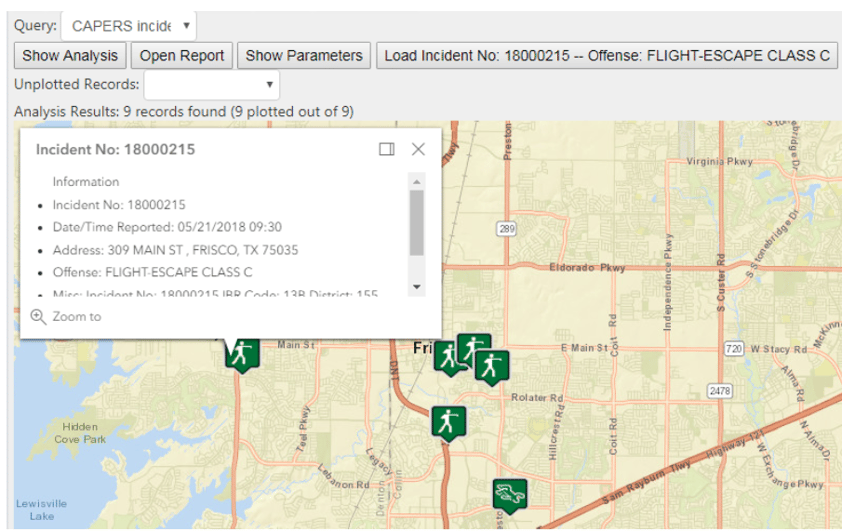 Crime analysis and reporting are becoming increasingly imperative and relevant not just for police departments, but the nation as a whole. In response, agencies are looking for practical tools to help them better allocate resources and respond to crimes more efficiently.
Crime analysis and reporting are becoming increasingly imperative and relevant not just for police departments, but the nation as a whole. In response, agencies are looking for practical tools to help them better allocate resources and respond to crimes more efficiently.
Data analysis tools are paramount to effective policing. Effective crime analysis tools enhance overall agency efficiency, allowing departments to identify how to allocate their resources and identify any gaps in their current allocations. Plus, in-field crime analysis reporting enables immediate cross-departmental communication; improving civilian and officer safety.
Let's look at the importance of crime analysis and reporting and how agencies can use a Records Management System (RMS) to measure the impact of their resources, allocate those resources more effectively, and utilize agency-defined reporting templates to better service their jurisdictions and communities.
The Importance of Crime Analysis Reporting
Implementing the right RMS allows law enforcement agencies to easily identify areas where crimes occur more frequently. For example, suppose a particular district or location is experiencing many burglaries at a certain time, place, or within a specific neighborhood. In that case, law enforcement can use this information to allocate their resources appropriately, preventing these crimes from occurring in the future.
Police departments can also take the information they collect to advocate for their agency to the city council, using hard data to show the need for additional support in a particular area. The mental health population, for example, is a growing concern for many law enforcement agencies and our country. By documenting all mental health calls and the time spent on those calls, an agency could use that data as evidence to support requests to the city council or other governing bodies for additional mental health resources.
Measuring Impact With Crime Analysis Reports
Measuring the impact of law enforcement efforts is crucial to determine if strategies effectively reduce crime. Using crime analysis reports, law enforcement can identify patterns and trends in crime, allowing them to pinpoint areas of concern and address them accordingly. By analyzing the data, law enforcement can determine if there are any changes in crime patterns and if their strategies have a positive impact.
By understanding where resources are needed most, agencies can proactively address crime and keep communities safe. Agencies know that good policing is not about increased number of arrests, it is about decreasing number of incidents. Reporting can be used to show the effectiveness of law enforcement for the community they serve, building trust and confidence in their efforts. If efforts are ineffective, law enforcement can use their data to try a different approach and track those efforts further.
The Visual, Advanced Mapping Advantage
Powerful RMS providers ensure that law enforcement agencies have visuals that allow them to map out calls for service, incident reports, and other data related to criminal activity. Using this visual data, law enforcement agencies identify areas requiring additional lighting or traffic control measures. Athena RMS, for example, allows agencies to grab pertinent information in real time to track accident reports, which can be used to pinpoint those trends.

Complete Athena Integration for Increased Efficiency
Athena RMS is fully integrated with the product suite, including Athena Computer-Aided Dispatch (CAD), Incident Command and Control (ICC), and Mobile Data Computer (MDC), allowing for real-time tracking and reporting of criminal activity. With this integration, law enforcement agencies can more easily share information and collaborate with other agencies and each other. The result? More efficient and effective policing.
Some RMS systems require officers to complete a report before it can become visible to a detective or another department member. With Athena RMS, any revisions made to case files are immediately visible to other officers, ensuring everyone can access the most up-to-date information. Whether you've just received a call for service or started a traffic violation, as soon as the officer begins the report, it's accessible to the appropriate team members, and investigators can start working on a case immediately.
Visibility and accessibility are customizable through Athena RMS, so agencies can choose which department members can access certain information and when.
Impact Agency Efficiency With Improved Crime Analysis and Reporting
Measuring the impact of law enforcement strategies using crime analysis reports helps an agency quickly determine what works and what doesn't. Athena RMS comes with advanced mapping features that allow law enforcement agencies to map out calls for service, incident reports, and other data related to criminal activity. The system is set up to meet agency-defined crime analysis report templates.
Our software is intelligent, simple, and non-restrictive, which enables agencies to access real-time data, share information, and allocate resources more effectively. To discover how crime analysis and reporting could help your agency, contact our knowledgeable team that's been in your shoes for a demo.
/vAthena%20Logo%20-%20White.png?width=2779&height=928&name=vAthena%20Logo%20-%20White.png)
/vAthena%20Logo%20-%20Full%20Color-1.png?width=2779&height=928&name=vAthena%20Logo%20-%20Full%20Color-1.png)